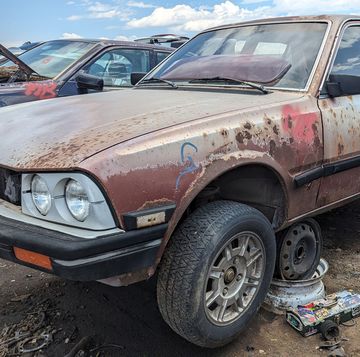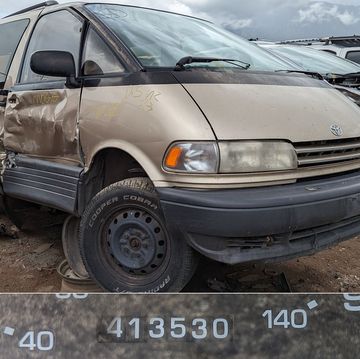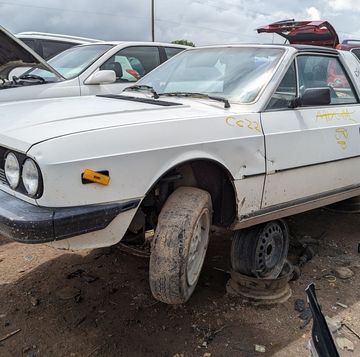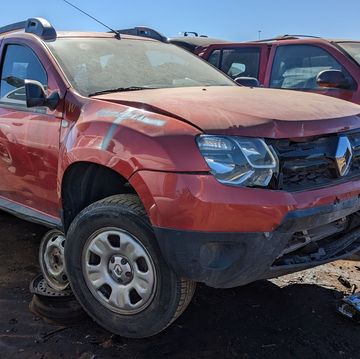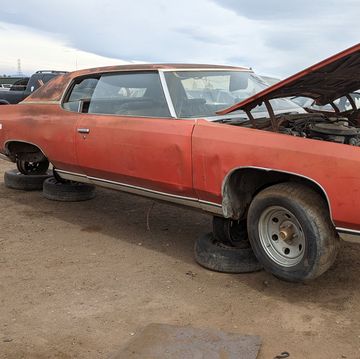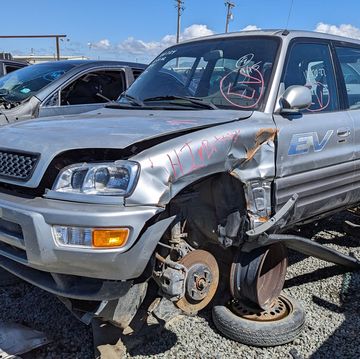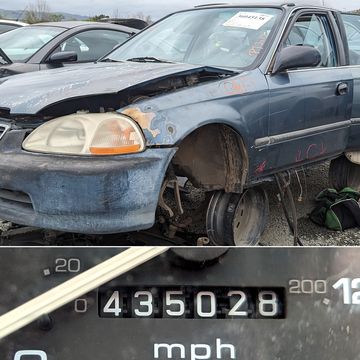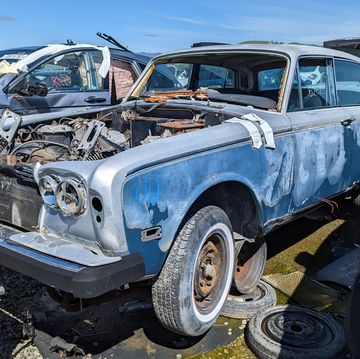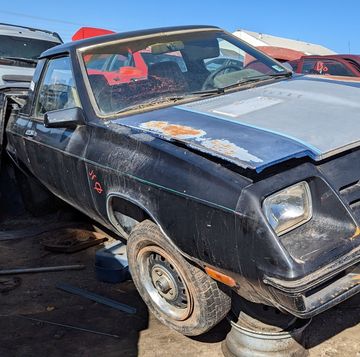For the 1965 model year, GM's Chevrolet Division built 1,649,600 full-size cars (including station wagons) in the United States. That's a number that's absolutely untouchable today; for comparison, the best-selling vehicle in the United States last year was the Ford F-Series truck, with a mere 653,957 units sold. At the very bottom of the big-Chevy prestige pyramid for 1965 was the humble Biscayne, a car that has nearly disappeared from the universe by now due to its lowly status. Somehow, this one managed to survive to age 58 before showing up in a Denver-area self-service boneyard.
The full-size Chevrolet line of 1965 had the Impala Super Sport at the very top, with the regular Impala just below that (the Caprice was still an Impala option package and didn't become a separate model until 1966). A step down from the Impala was the Bel Air, which had a few luxury touches and a modest amount of chrome trim. Then there was the Biscayne, which was a no-frills big sedan for the genuinely thrifty. Out of all the cars General Motors built on the B-Body chassis for 1965, the Biscayne was the cheapest.
The Impala was a lot of car for the money in 1965 (and I would know!), listing at just $2779 for a four-door sedan with a 283-cubic-inch V8 (that's about $26,885 in 2023 dollars). The Biscayne four-door sedan cost $2417 with a six-cylinder engine and no frills, or about $23,383 today. Most Chevy shoppers looking at sedans compared the two and went for the V8 Impala over the I6 Biscyane: 746,800 versus 107,700 (Impalas were available with sixes and Biscaynes could be ordered with V8s, of course).
The original engine in this car (and this one might be that very engine, but you never know how many swaps have happened with an old Detroit car of this era) was a 230-cubic-inch (3.8-liter) "Turbo-Thrift" pushrod straight-six rated at 140 hp. That sounds terrible, but consider the curb weight of this car: 3365 pounds, or about what a new Camry weighs.
Back in the 1960s, the base price generally wasn't anything like what you actually paid for a new American car, not after you started adding options that we'd consider necessary equipment today. If you wanted an automatic transmission, the two-speed Powerglide added $183.30 to the cost ($1773 in today's money). This car has the base transmission: a three-speed column-shifted manual. In theory, the Biscayne could be ordered with a 400-horse 409 V8 and four-on-the-floor manual transmission, though few buyers were wise enough to do so.
The build tag on the firewall tells us this car was built at the St. Louis Assembly plant (best-known for manufacturing Corvettes from 1954 through 1981) in the second week of July, 1965. The body color is Sierra Tan and the interior trim is Fawn. The only accessory listed appears to be a right-side exterior mirror. The original buyer of this car did not squander money.
You won't find many Biscaynes or even Bel Airs from the middle 1960s these days; this is a once-common machine that has become exceedingly rare. It could have been restored without too much difficulty, but an Impala SS hardtop would make a lot more financial sense.
The neglected Biscayne doesn't even get a mention in this TV commercial for the 1965 Chevy car lineup.









